Rafi Church pray in an eyefull scene
Also known as
- Saint Heripsime Church
- Armenian Church
Geographical location of Rafi Church
It is located in Rafi seminary courtyard, Ayatollah Taleghani Street, Qazvin Province. It also has another door at Rafi Dead End, in Khayyam Street.
History and culture of Rafi Church
It was built in 1908, according to the stony plate set on the entrance of the seminary, the first Pahlavi period. The current structure is the expanded form of the first one, built by the efforts of Haroutioun Mesrobian Priest (sorry in advance for any misspelling) in 1936, and has a temple, auditorium, and a school (an educational and worship place for Armenian). The previous church was small and after the number of Armenian raised in the city, they expanded it. In addition to the public religious rite, each year this church hosts the special ceremony "departure and ascension of the Virgin Mary" which takes place in conjunction with the "feast of the consecration of grapes" in August and the Armenian go to this sacred and historic place on a pilgrimage.
Architecture of Rafi Church
Rafi Church has a brick building and a rectangle-shape floor with four columns joined by arches. Church’s axis is western eastern and in its eastern side, alter is located which is separated from prayer hall by a couple of stairs and has a room on each side. On the other hand, in the western angle there’s a door that leads to the bell tower. The whole space has an octagon plan and a semi-circle entrance.
Tips and ideas
Passing through Khayyam Street, the most crowded street in Qazvin, on your way; don’t miss the unique experience of walking across various shops, boutiques, stores, and so on along with the chance of buying original Persian goods for souvenirs. Since it’s a crowded street and the church is in a dead-end, do not go there by your car; there are some parking garages in the street that you can use. As I said there is another way to the church from Taleghani Street where on its west end you will find Sabzeh Meydan and Chehel Sotun Palace. Cantor Church, known as the bell tower, and Mellat Park are also on the other end of the street.
REMEMBER Qazvin is a small city so you don’t need any vehicle to go around. Also we have provided a map, below, that shows every nearby attraction which can be reached by no more than a ten-minute walk.
YaldaMedTour would love to hear about your personal experiences. Please share it with us in the comments below.
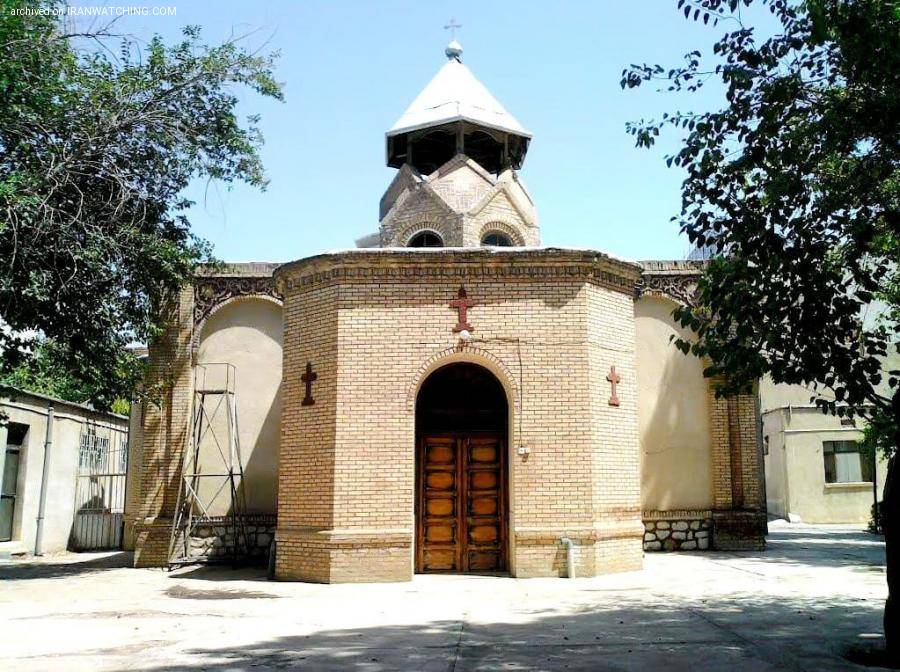 2020-02-05 13:31:16+3:30
2023-11-30 09:33:54+3:30
It was built in 1908, according to the stony plate set on the entrance of the seminary, the first Pahlavi period. The current structure is the expanded form of the first one, built by the efforts of Haroutioun Mesrobian Priest (sorry in advance for any misspelling) in 1936, and has a temple, auditorium, and a school (an educational and worship place for Armenian). The previous church was small and after the number of Armenian raised in the city, they expanded it.
2020-02-05 13:31:16+3:30
2023-11-30 09:33:54+3:30
It was built in 1908, according to the stony plate set on the entrance of the seminary, the first Pahlavi period. The current structure is the expanded form of the first one, built by the efforts of Haroutioun Mesrobian Priest (sorry in advance for any misspelling) in 1936, and has a temple, auditorium, and a school (an educational and worship place for Armenian). The previous church was small and after the number of Armenian raised in the city, they expanded it.
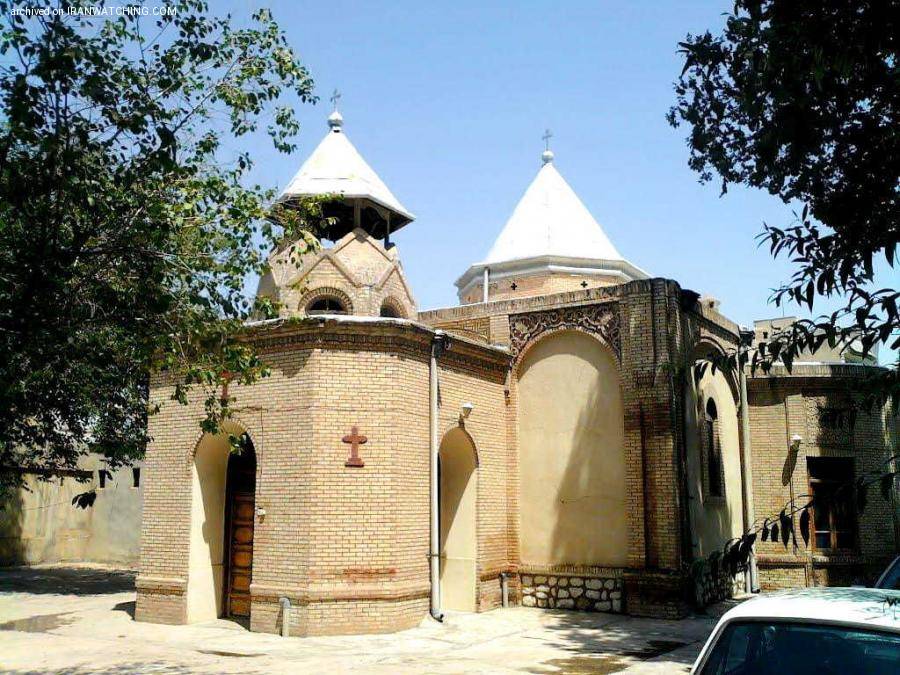
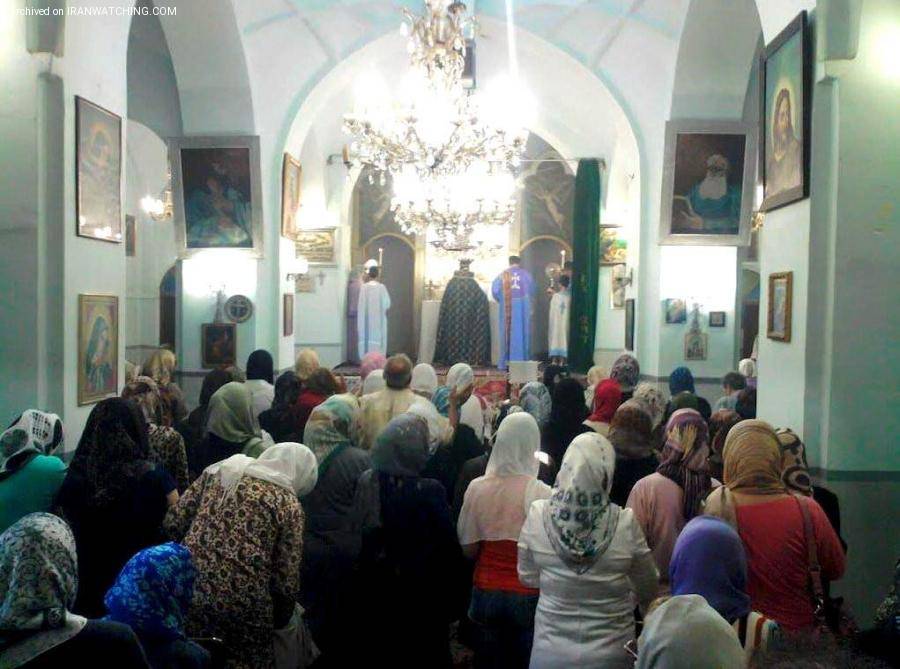
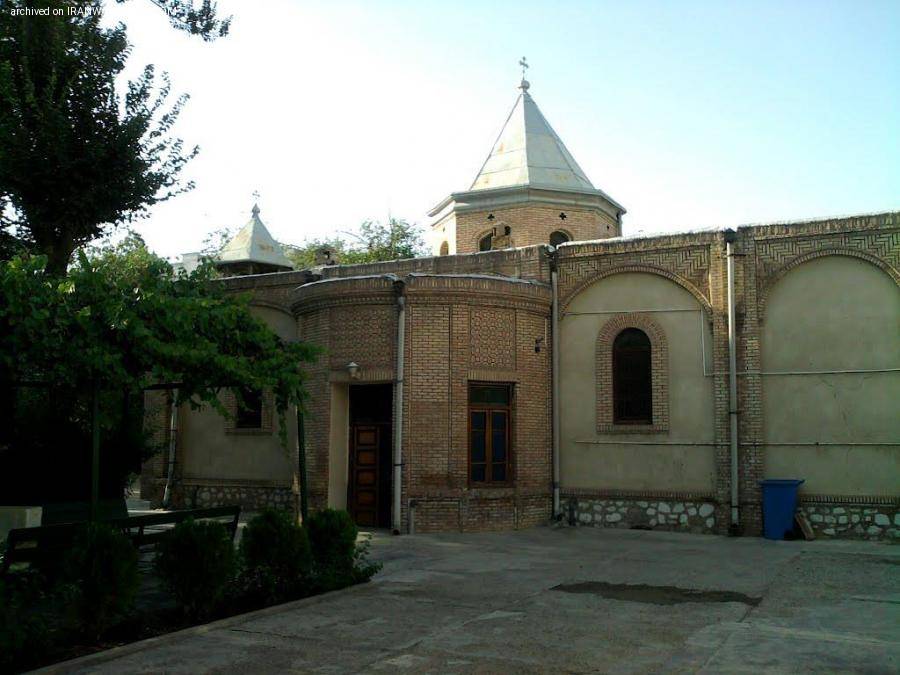 eyJpdiI6IkNZOXdKSy9USm5QL3JRYXBVWGVXSFE9PSIsInZhbHVlIjoiNnNHNElyT0czZEFuMGJLSUNlSHZ5QT09IiwibWFjIjoiMWYzY2Q4ZjM1ODYyNWM3YWNmMTIyMzE4YTNhNGY3NGYwZjU2MGUzYTQxYzVmY2ExNjVjMmE1ZDYzODZkZGY4MiIsInRhZyI6IiJ9 eyJpdiI6ImNSSW5pZ0I5VHlJc3A3U09VWFRZTWc9PSIsInZhbHVlIjoiM05NMUZtV0NQenFsOHFNWFRKUTJ0QT09IiwibWFjIjoiZTllZGE4NjhiY2YzNjEzYTI1MmIyY2RkZjEyNzI5NjdiZGQ3YzEzOTY5ZDk2NDZkZWZjNzk4YzI2N2M0MzdkNyIsInRhZyI6IiJ9
Author
info@yaldamedtour.com
/en/user-profile/10233
YaldaMedTour
Barajin Salamat Road
+98
Qazvin
Qazvin, Qazvin Province, Iran.
,
info@yaldamedtour.com
Rafi Church - pray in an eyefull scene
Rafi Church - pray in an eyefull scene
eyJpdiI6IkNZOXdKSy9USm5QL3JRYXBVWGVXSFE9PSIsInZhbHVlIjoiNnNHNElyT0czZEFuMGJLSUNlSHZ5QT09IiwibWFjIjoiMWYzY2Q4ZjM1ODYyNWM3YWNmMTIyMzE4YTNhNGY3NGYwZjU2MGUzYTQxYzVmY2ExNjVjMmE1ZDYzODZkZGY4MiIsInRhZyI6IiJ9 eyJpdiI6ImNSSW5pZ0I5VHlJc3A3U09VWFRZTWc9PSIsInZhbHVlIjoiM05NMUZtV0NQenFsOHFNWFRKUTJ0QT09IiwibWFjIjoiZTllZGE4NjhiY2YzNjEzYTI1MmIyY2RkZjEyNzI5NjdiZGQ3YzEzOTY5ZDk2NDZkZWZjNzk4YzI2N2M0MzdkNyIsInRhZyI6IiJ9
Author
info@yaldamedtour.com
/en/user-profile/10233
YaldaMedTour
Barajin Salamat Road
+98
Qazvin
Qazvin, Qazvin Province, Iran.
,
info@yaldamedtour.com
Rafi Church - pray in an eyefull scene
Rafi Church - pray in an eyefull scene
 It was built in 1908, according to the stony plate set on the entrance of the seminary, the first Pahlavi period. The current structure is the expanded form of the first one, built by the efforts of Haroutioun Mesrobian Priest (sorry in advance for any misspelling) in 1936, and has a temple, auditorium, and a school (an educational and worship place for Armenian). The previous church was small and after the number of Armenian raised in the city, they expanded it.
It was built in 1908, according to the stony plate set on the entrance of the seminary, the first Pahlavi period. The current structure is the expanded form of the first one, built by the efforts of Haroutioun Mesrobian Priest (sorry in advance for any misspelling) in 1936, and has a temple, auditorium, and a school (an educational and worship place for Armenian). The previous church was small and after the number of Armenian raised in the city, they expanded it.


 Rafi Dead End, Khayyam Street, Qazvin Province, Iran
+98
Rafi Dead End, Khayyam Street, Qazvin Province, Iran
Rafi Dead End, Khayyam Street, Qazvin Province, Iran
IR
Show On Google Maps
Rafi Church - pray in an eyefull scene
Rafi Church - pray in an eyefull scene
Rafi Dead End, Khayyam Street, Qazvin Province, Iran
+98
Rafi Dead End, Khayyam Street, Qazvin Province, Iran
Rafi Dead End, Khayyam Street, Qazvin Province, Iran
IR
Show On Google Maps
Rafi Church - pray in an eyefull scene
Rafi Church - pray in an eyefull scene
 It was built in 1908, according to the stony plate set on the entrance of the seminary, the first Pahlavi period. The current structure is the expanded form of the first one, built by the efforts of Haroutioun Mesrobian Priest (sorry in advance for any misspelling) in 1936, and has a temple, auditorium, and a school (an educational and worship place for Armenian). The previous church was small and after the number of Armenian raised in the city, they expanded it.
Rafi Dead End, Khayyam Street, Qazvin Province, Iran
+98
Rafi Dead End, Khayyam Street, Qazvin Province, Iran
Rafi Dead End, Khayyam Street, Qazvin Province, Iran
IR
Show On Google Maps
Adults
Persian
English.
It was built in 1908, according to the stony plate set on the entrance of the seminary, the first Pahlavi period. The current structure is the expanded form of the first one, built by the efforts of Haroutioun Mesrobian Priest (sorry in advance for any misspelling) in 1936, and has a temple, auditorium, and a school (an educational and worship place for Armenian). The previous church was small and after the number of Armenian raised in the city, they expanded it.
Rafi Dead End, Khayyam Street, Qazvin Province, Iran
+98
Rafi Dead End, Khayyam Street, Qazvin Province, Iran
Rafi Dead End, Khayyam Street, Qazvin Province, Iran
IR
Show On Google Maps
Adults
Persian
English.
Rafi Church - pray in an eyefull scene
 It was built in 1908, according to the stony plate set on the entrance of the seminary, the first Pahlavi period. The current structure is the expanded form of the first one, built by the efforts of Haroutioun Mesrobian Priest (sorry in advance for any misspelling) in 1936, and has a temple, auditorium, and a school (an educational and worship place for Armenian). The previous church was small and after the number of Armenian raised in the city, they expanded it.
Rafi Dead End, Khayyam Street, Qazvin Province, Iran
+98
Rafi Dead End, Khayyam Street, Qazvin Province, Iran
Rafi Dead End, Khayyam Street, Qazvin Province, Iran
IR
unknown
Rated 4.3333333333333
based on 3 customer reviews
1
5
eyJpdiI6Ik5KcTRuQjk0UkVja00yZlIzOXAxSVE9PSIsInZhbHVlIjoidWZPQjIySWNiUXZwWnZyRnlPTVJidz09IiwibWFjIjoiOThmMWRmOTZiYTZmNDY3MTc2MTUwNjRkYWIxMTBlZjA4MjE5M2FhOTM0MTk0ZWUxM2NkZjgxM2MxOWE2ZjI4YyIsInRhZyI6IiJ9 eyJpdiI6IjJaTHA0N3I2TFdtMWpiL241bHMvWHc9PSIsInZhbHVlIjoiSTYvQ3NHbFNzUjFBNGY0UEE5R0lIdz09IiwibWFjIjoiOWUyZmNjOTZiZjllMTE5MTkzY2I1ODEwMGM3ZGE2NDgyNjVkZGUxMWM0ODQ3NWZjNjFiMjE3NjA5MzZhMmRhZiIsInRhZyI6IiJ9,
2020-08-30 06:38:35
1
5/
5stars
Very nostalgic and beautiful church.There are also tombs of some armenian clergymen and priests in front of the northern entrance. Around 40-50 years ago, there was a school building on the west side of the church that shared the same vast northern curtyard with it.
eyJpdiI6IkNZOXdKSy9USm5QL3JRYXBVWGVXSFE9PSIsInZhbHVlIjoiNnNHNElyT0czZEFuMGJLSUNlSHZ5QT09IiwibWFjIjoiMWYzY2Q4ZjM1ODYyNWM3YWNmMTIyMzE4YTNhNGY3NGYwZjU2MGUzYTQxYzVmY2ExNjVjMmE1ZDYzODZkZGY4MiIsInRhZyI6IiJ9 eyJpdiI6ImNSSW5pZ0I5VHlJc3A3U09VWFRZTWc9PSIsInZhbHVlIjoiM05NMUZtV0NQenFsOHFNWFRKUTJ0QT09IiwibWFjIjoiZTllZGE4NjhiY2YzNjEzYTI1MmIyY2RkZjEyNzI5NjdiZGQ3YzEzOTY5ZDk2NDZkZWZjNzk4YzI2N2M0MzdkNyIsInRhZyI6IiJ9,
2021-01-30 19:31:52
1
4/
5stars
wow, I didn't know that. Interesting information. Thanks for sharing them.
eyJpdiI6Ik5KcTRuQjk0UkVja00yZlIzOXAxSVE9PSIsInZhbHVlIjoidWZPQjIySWNiUXZwWnZyRnlPTVJidz09IiwibWFjIjoiOThmMWRmOTZiYTZmNDY3MTc2MTUwNjRkYWIxMTBlZjA4MjE5M2FhOTM0MTk0ZWUxM2NkZjgxM2MxOWE2ZjI4YyIsInRhZyI6IiJ9 eyJpdiI6IjJaTHA0N3I2TFdtMWpiL241bHMvWHc9PSIsInZhbHVlIjoiSTYvQ3NHbFNzUjFBNGY0UEE5R0lIdz09IiwibWFjIjoiOWUyZmNjOTZiZjllMTE5MTkzY2I1ODEwMGM3ZGE2NDgyNjVkZGUxMWM0ODQ3NWZjNjFiMjE3NjA5MzZhMmRhZiIsInRhZyI6IiJ9,
2023-11-30 09:32:24
1
4/
5stars
this place is forbiddent and you cant visit it!!!
It was built in 1908, according to the stony plate set on the entrance of the seminary, the first Pahlavi period. The current structure is the expanded form of the first one, built by the efforts of Haroutioun Mesrobian Priest (sorry in advance for any misspelling) in 1936, and has a temple, auditorium, and a school (an educational and worship place for Armenian). The previous church was small and after the number of Armenian raised in the city, they expanded it.
Rafi Dead End, Khayyam Street, Qazvin Province, Iran
+98
Rafi Dead End, Khayyam Street, Qazvin Province, Iran
Rafi Dead End, Khayyam Street, Qazvin Province, Iran
IR
unknown
Rated 4.3333333333333
based on 3 customer reviews
1
5
eyJpdiI6Ik5KcTRuQjk0UkVja00yZlIzOXAxSVE9PSIsInZhbHVlIjoidWZPQjIySWNiUXZwWnZyRnlPTVJidz09IiwibWFjIjoiOThmMWRmOTZiYTZmNDY3MTc2MTUwNjRkYWIxMTBlZjA4MjE5M2FhOTM0MTk0ZWUxM2NkZjgxM2MxOWE2ZjI4YyIsInRhZyI6IiJ9 eyJpdiI6IjJaTHA0N3I2TFdtMWpiL241bHMvWHc9PSIsInZhbHVlIjoiSTYvQ3NHbFNzUjFBNGY0UEE5R0lIdz09IiwibWFjIjoiOWUyZmNjOTZiZjllMTE5MTkzY2I1ODEwMGM3ZGE2NDgyNjVkZGUxMWM0ODQ3NWZjNjFiMjE3NjA5MzZhMmRhZiIsInRhZyI6IiJ9,
2020-08-30 06:38:35
1
5/
5stars
Very nostalgic and beautiful church.There are also tombs of some armenian clergymen and priests in front of the northern entrance. Around 40-50 years ago, there was a school building on the west side of the church that shared the same vast northern curtyard with it.
eyJpdiI6IkNZOXdKSy9USm5QL3JRYXBVWGVXSFE9PSIsInZhbHVlIjoiNnNHNElyT0czZEFuMGJLSUNlSHZ5QT09IiwibWFjIjoiMWYzY2Q4ZjM1ODYyNWM3YWNmMTIyMzE4YTNhNGY3NGYwZjU2MGUzYTQxYzVmY2ExNjVjMmE1ZDYzODZkZGY4MiIsInRhZyI6IiJ9 eyJpdiI6ImNSSW5pZ0I5VHlJc3A3U09VWFRZTWc9PSIsInZhbHVlIjoiM05NMUZtV0NQenFsOHFNWFRKUTJ0QT09IiwibWFjIjoiZTllZGE4NjhiY2YzNjEzYTI1MmIyY2RkZjEyNzI5NjdiZGQ3YzEzOTY5ZDk2NDZkZWZjNzk4YzI2N2M0MzdkNyIsInRhZyI6IiJ9,
2021-01-30 19:31:52
1
4/
5stars
wow, I didn't know that. Interesting information. Thanks for sharing them.
eyJpdiI6Ik5KcTRuQjk0UkVja00yZlIzOXAxSVE9PSIsInZhbHVlIjoidWZPQjIySWNiUXZwWnZyRnlPTVJidz09IiwibWFjIjoiOThmMWRmOTZiYTZmNDY3MTc2MTUwNjRkYWIxMTBlZjA4MjE5M2FhOTM0MTk0ZWUxM2NkZjgxM2MxOWE2ZjI4YyIsInRhZyI6IiJ9 eyJpdiI6IjJaTHA0N3I2TFdtMWpiL241bHMvWHc9PSIsInZhbHVlIjoiSTYvQ3NHbFNzUjFBNGY0UEE5R0lIdz09IiwibWFjIjoiOWUyZmNjOTZiZjllMTE5MTkzY2I1ODEwMGM3ZGE2NDgyNjVkZGUxMWM0ODQ3NWZjNjFiMjE3NjA5MzZhMmRhZiIsInRhZyI6IiJ9,
2023-11-30 09:32:24
1
4/
5stars
this place is forbiddent and you cant visit it!!!
Keywords: Rafi Church, Saint Heripsime Church, Armenian Church,
Nearby Places
Comments
wow, I didn't know that. Interesting information. Thanks for sharing them.
this place is forbiddent and you cant visit it!!!
Copyright © 2025 To YaldaMedTour. All Rights Reserved.
![]()



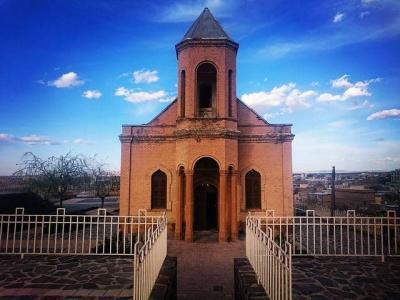

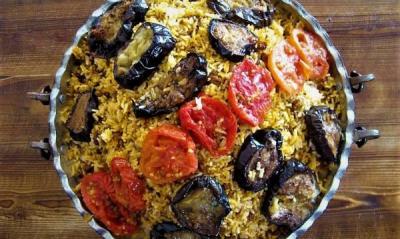

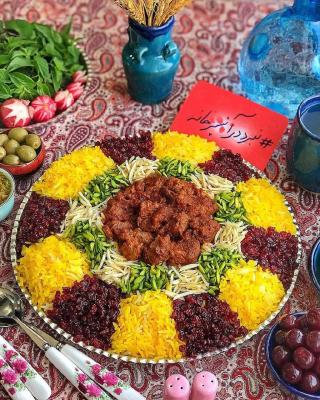



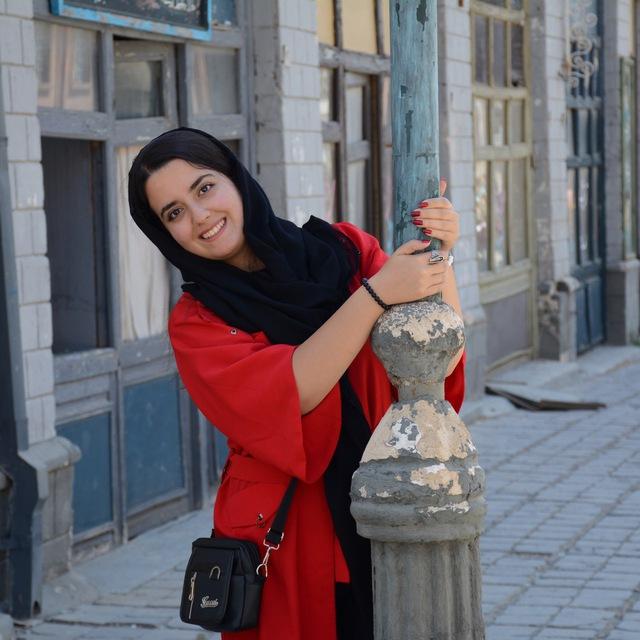
Guest User
2020/08/30 06:38:35
Very nostalgic and beautiful church.There are also tombs of some armenian clergymen and priests in front of the northern entrance. Around 40-50 years ago, there was a school building on the west side of the church that shared the same vast northern curtyard with it.